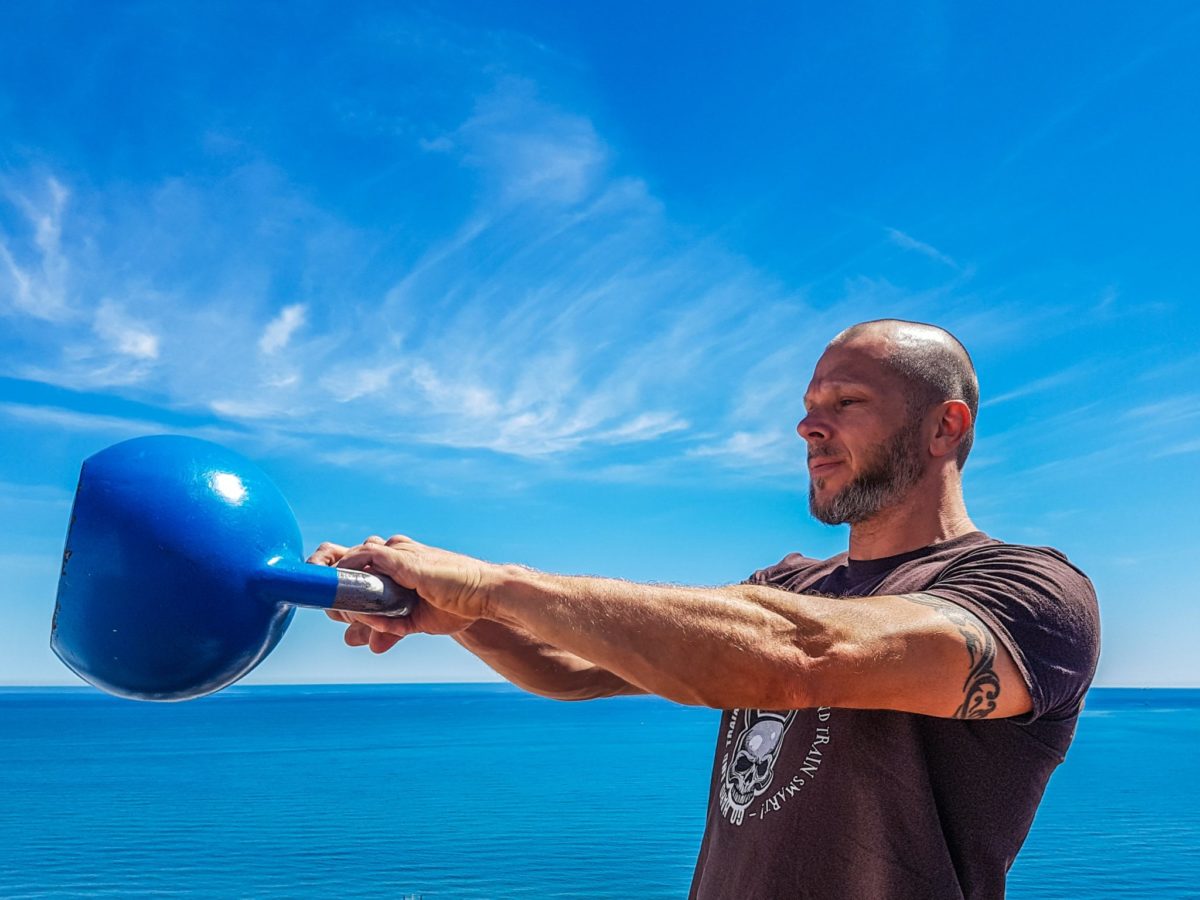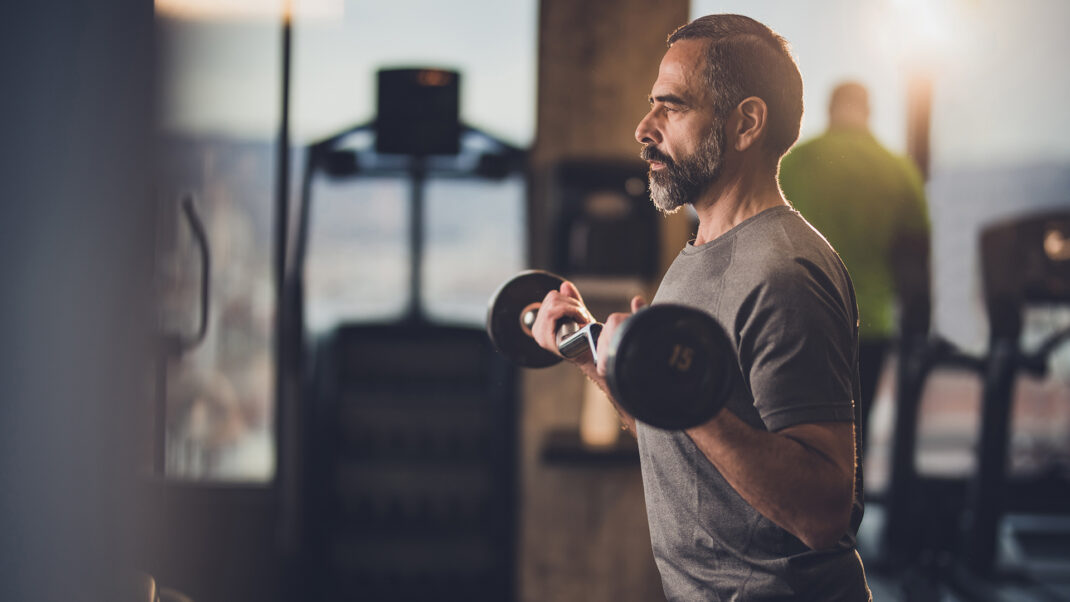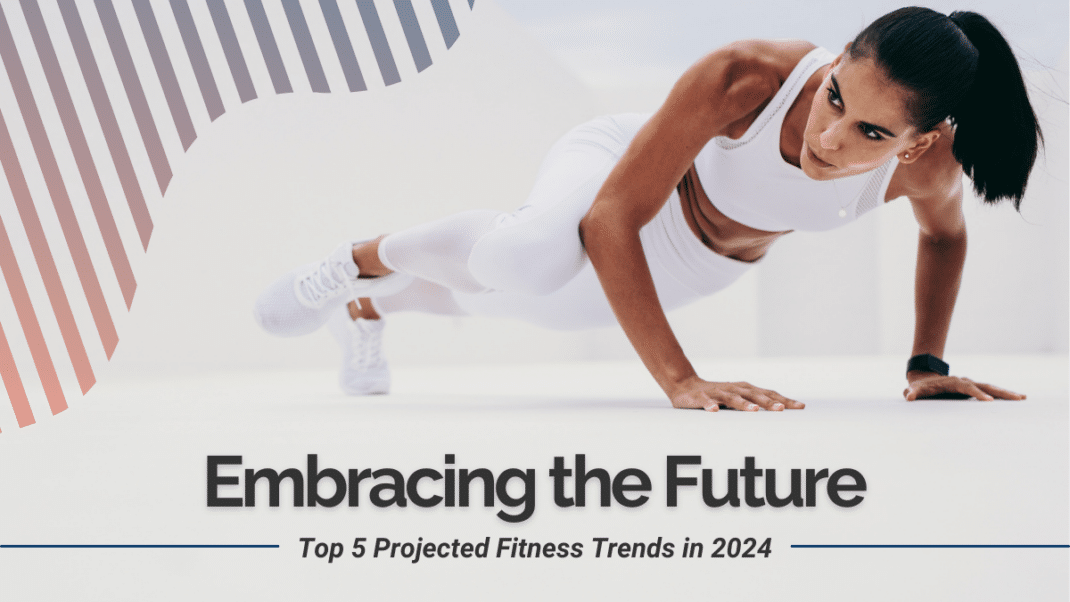Are Functional HIIT Workouts the Fountain of Youth?
Get the lowdown on slowing the aging process, improving mobility, increasing strength and power, and delivering metabolic conditioning with impact.
Are you developing functional HIIT workouts for your fit 40-, 50- and 60-year-old clients? This podcast excerpt may be just what you’re searching for.
Pete McCall, MS, a content developer, host of the All About Fitness podcast and author of the books Smarter Workouts: The Science of Exercise Made Simple and the newly released Ageless Intensity, recently was my featured guest on the IDEAfit PRO SHOW podcast (Season 1, Episode 17). He and I talked about the premise of his new book, among other topics.
The new volume offers evidence on how functional HIIT workouts can minimize psychological effects of aging as well as maximize health benefits for people 40 and older. We explore how functional HIIT can slow the aging process, improve mobility, increase strength and power, and deliver metabolic conditioning with impact.
McCall, who holds a master’s degree in exercise science and who has educated fitness professionals since 2002, has authored many articles and textbook chapters about exercise physiology. He is an education consultant and master trainer for Core Health & Fitness, as well as a content creator for both ACE and NASM.
If you like this slice of our conversation, we invite you to subscribe and download the episode (or the whole season). Note: The excerpt has been edited for clarity and brevity.
Sandy Todd Webster (STW): You’ve been super busy during the pandemic. In addition to your podcasting and all the other activities you do, you wrote this new book. In it, you offer evidence on how functional HIIT workouts can minimize psychological effects of aging, as well as maximize health benefits for people 40 and older.
What drove you to this topic?
Pete McCall (PM): Sandy, you and all the people in our age group and our demographic were the inspiration for this book. It seems at every gym I go to there is a group of individuals out there from early 40s to late 50s, early 60s who are still getting after it and training really hard. They just want to do it in a way that’s smart. They’re not afraid of working hard. They’re not afraid of getting a little bit sore. But they don’t want to be the wrong kind of sore. They want to be “growth-oriented sore,” not “pain-oriented sore.”
So that really was my motivation: Having a resource based on published research for people over 40 who love working out and who don’t want to slow down. They just want to do it smarter, not necessarily harder.
STW: You’ve broken the book into three very logical parts. You start with a section on slowing the aging process through functional HIIT workouts and changing how you eat. So, set the table for us. Why did you feel functional training was the logical place to start the conversation?
PM: What I’ve tried to do in the book is to kind of refocus functional training. If you’re over the age of 40, functional training becomes the means to achieve successful aging, a concept of aging free from disease, free from disability and with optimal cognitive and physical performance.
If you’re over a certain age, functional training is using exercise to control how we age to control the effects of the aging process. It’s not so much about lifting a certain amount of weight or doing a cool balance exercise. It’s really understanding that any time you exercise you’re actually taking an important step for slowing down how aging affects you.
STW: So, for instance, I like to garden a lot and so I try to do moves in my training that assist me with that. Is that the kind of thing we’re talking about?
See also: Functional Training for Gardeners
PM: Absolutely. And I love the concept of the gardener’s workout. Functional is defined by the activity you want to train for. So, yes, if you want to garden, if you want to play with your grandkids without being sore the next day, if you want to take that vacation to Machu Picchu, I see that as functional training. Exercise and fitness means having the ability to do what you want to do when you want to do it.
When I look up “fitness” in a dictionary, there’s no mention of appearance. There’s no mention of body type. There’s no mention of being a certain size. The definitions of fitness all center around work capacity and ability to perform.
Fitness is the ability to have your optimal life for how you want to live. The beauty of it is really that everybody has the opportunity to define fitness for what it means for themselves. One of the things that we mistakenly have done in the greater whole of the industry is trying to define what fitness is for other people, rather than allowing people to really have their own definition of what fitness means.
STW: Absolutely. It should be individual. As fit pros, we should be looking at every individual as a unique specimen. Everybody has their own goals, whether they’re aesthetic, whether they’re functional, whether it’s competing at a very high level in sports. It can be anything to anyone.
The second part of the book is focused on improving how active agers move through mobility patterns and exercises. And then you get into strength and power. Finally, you cover metabolic conditioning and sample workouts.
How has the body of research impacted the way we think about these facets of training and aging over the past 20 years?
PM: When you look at most of the research on older adults, a large majority of the research and the overwhelming majority of the research is done on deconditioned older adults.
There’s not a lot of research out there for adults who have been exercising their whole lives. There was a 2018 study by Ball State University’s exercise science lab that compared fit 70 year olds to younger people. They found that fit 70 year olds who have been exercising throughout their lifespan had similar muscle biopsies, enzyme levels and mitochondrial density to those of people 40 and 50 years younger.
To me, that’s remarkable. What I try to do in the book is to say based on what we’ve seen, we know strength and power training can elevate testosterone and growth hormone. There’s been research on that with people in their 60s and 70s. I try to bring that all together in a format to say, okay, based on what we’ve seen, we should be doing heavy strength training to the point of fatigue.
We should be doing a little explosive training. We should be doing metabolic conditioning. There’s some really cool stuff on functional HIIT workouts for people in their 60s and 70s as a means of managing a disease and avoiding disease. It’s really kind of shifting our mindset.
For centuries, we’ve had people looking for the fountain of youth. What I want people to realize is this type of functional HIIT workout really is the fountain of youth. Go swing a kettlebell, flip a tire, and then run 200 meters, and you’re on your way.

“For centuries, we’ve had people looking for the fountain of youth … this type of functional HIIT workout really is the fountain of youth. Go swing a kettlebell, flip a tire, and then run 200 meters, and you’re on your way.” – Pete McCall, MS
STW: My morning workout is simply integral to my being. I just don’t feel good or strong or mentally fit if I don’t work out.
PM: The thing is, you’re working with people who understand programming.
If you’re relatively young and new to the industry, number one, welcome. But number two, be smart about how you do the programming. People in their late 40s into their 50s may be fit and can work hard, but they just want to work smart. If they need to take a moment off and catch their breath, by all means, let them do that.
STW: In the past 3-5 years my new personal mantra for training has been just because I can do it doesn’t mean I should do it every time. If I’m not feeling it that day I just give myself a pass and simply try to enjoy the movement.
PM: That’s why mobility is such an important point of the book. Some of my favorite workouts are mobility workouts. Just going through lunge and bodyweight patterns, maybe some mobility stuff with a TRX or with a ViPR, not doing a lot of heavy load or maybe using a cable machine or just moving through different planes.
Because, yes, I want to get after it and be able to lift heavy, but physiologically, we can only do that two, maybe three days a week because we need, especially as we get a little bit older, a little bit more recovery time.
It doesn’t mean you’ll skip training tomorrow. But maybe it means that instead of going hard tomorrow, you’ll take that gentle yoga class, or maybe you just do a body weight movement session, or maybe you go for a good 40-45 minute walk that gets your heart rate up a little bit and gets you sweating a little bit, but not out of breath.
You don’t need to crush yourself with every workout, but two or three workouts a week should make you slightly uncomfortable to get the best results throughout the aging process.
STW: That brings us to the last part of the book, which is about designing your workout plan to extend your lifespan.
We’ve just alluded to some of the principles of that. After researching and writing the book and as an active ager yourself, what did you learn that led to any kind of change in your own training regime?
PM: I love that question. It’s what you just said about giving yourself permission to say, ‘You know what? Today I don’t need to do a hard workout if I go for a 30-minute walk, or if I just go do some stretching or if I do some mobility work.’
That means tomorrow my battery is going to be recharged and I can come out a little bit harder. I try to look at my week and kind of plan what I’m going to do, how I’m going to train.
Is there a day when I might have a crazy day? What can I do on that day? What I’ve learned going through the research is to just be forgiving, because guess what? Tomorrow’s going to happen. So if you didn’t make the functional HIIT workouts today, do whatever you can. Just get up and move a little bit, and then come back and do it again tomorrow.
Sandy Todd Webster
For 22 years, Sandy Todd Webster was the chief architect of IDEA's content program - including the award-winning IDEA FITNESS JOURNAL and IDEA FOOD & NUTRITION TIPS - the industry's leading resources for fitness, wellness and nutrition professionals worldwide. She created, launched and nurtured these brands and many others during her productive and purposeful IDEA tenure. Sandy is a Rouxbe-certified professional plant-based cook and a Precision Nutrition Level 1 Coach who is pursuing a Master's degree in Sustainable Food Systems through The Culinary Institute of America (expected August 2024). She plans to combine these passions with her content expertise to continue inspiring others to make the world a more just, healthy and regenerative place.






